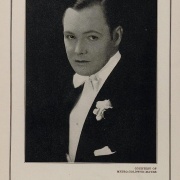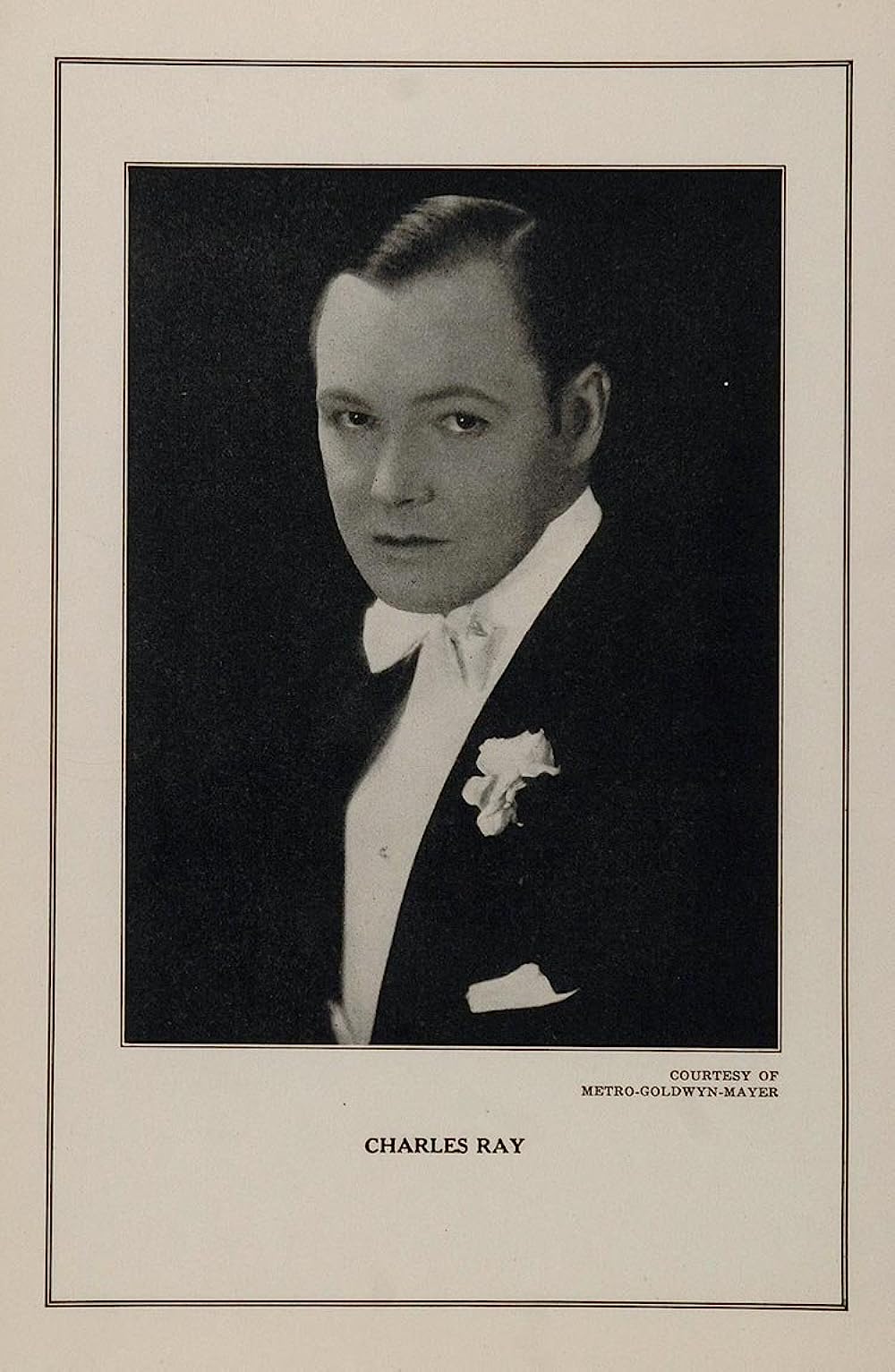 Product Product Link Link |
|
 Ray portrayed simple unaffected country bumpkins in silent rural melodramas. Unfortunately, Ray let Hollywood turn him into a headstrong egotist. Alienating most producers, he put up his own money to finance a major feature called The Courtship of Myles Standish (1923). The film was a miserable failure that wiped out Ray's fortune. Comeback attempts were hampered by the advent of the sound picture.Boyish American leading man who shot to fame but could not sustain his career. The son of a Scots-Irish railroad worker and a mother of French descent, Ray was raised peripatetically in towns in Illinois and then California. Half-hearted attempts at a business career were waylaid by a growing love for the theatre, and his sister nudged him into a professional career by giving him the tuition to attend the Wallace Dramatic School. After touring in plays (some of which he produced) throughout the Southwest, Ray returned to Los Angeles and, in 1912, applied for work as an extra at Thomas H. Ince's studio at Inceville. After several extra jobs, producer Ince noticed Ray and gave him increasingly important juvenile roles. The leading role in The Coward (1915) made him a star and, by 1917, he was a world-famous figure, starring in one film after another in which the innocent country boy wises up to the dangers of the big city. Tired after several years and dozens of films with the same basic plot, Ray broke away from his sponsor and benefactor Ince and entered into his own production company. Much has been made of Ray's supposed hubris and ingratitude, but egotism seems to have had less to do with the decision than the need for a change. Ray said, "Call it ambition, restlessness, anything you like, but I had this desire for new experience and new expression, and it had nothing to do with making money". Although Ray's star still shone brightly, and several of his self-produced films were artistic successes, his career began to falter as he moved further from his familiar bumpkin character. He lost everything he owned on a failed production, The Courtship of Myles Standish (1923), and was rescued from utter poverty by his old mentor, Thomas H. Ince, who put him into several films of increasing interest. But Ince's death in 1924 sent Ray Poverty Row where he made a few undistinguished pictures. His departure from important roles coincided with, but was not caused by, the transition to talkies. Ray went to New York and tried unsuccessfully to find stage work and to write. After several years of hand-to-mouth living, he returned to Los Angeles and began playing bit parts of no consequence. A slightly more prominent role in A Yank in the RAF (1941) seem to promise a comeback, but failed to provide one. In 1943, an impacted tooth became infected and Ray died from it at the age of 52, almost completely forgotten by the public whose attention he had commanded so surely twenty years earlier. Ray portrayed simple unaffected country bumpkins in silent rural melodramas. Unfortunately, Ray let Hollywood turn him into a headstrong egotist. Alienating most producers, he put up his own money to finance a major feature called The Courtship of Myles Standish (1923). The film was a miserable failure that wiped out Ray's fortune. Comeback attempts were hampered by the advent of the sound picture.Boyish American leading man who shot to fame but could not sustain his career. The son of a Scots-Irish railroad worker and a mother of French descent, Ray was raised peripatetically in towns in Illinois and then California. Half-hearted attempts at a business career were waylaid by a growing love for the theatre, and his sister nudged him into a professional career by giving him the tuition to attend the Wallace Dramatic School. After touring in plays (some of which he produced) throughout the Southwest, Ray returned to Los Angeles and, in 1912, applied for work as an extra at Thomas H. Ince's studio at Inceville. After several extra jobs, producer Ince noticed Ray and gave him increasingly important juvenile roles. The leading role in The Coward (1915) made him a star and, by 1917, he was a world-famous figure, starring in one film after another in which the innocent country boy wises up to the dangers of the big city. Tired after several years and dozens of films with the same basic plot, Ray broke away from his sponsor and benefactor Ince and entered into his own production company. Much has been made of Ray's supposed hubris and ingratitude, but egotism seems to have had less to do with the decision than the need for a change. Ray said, "Call it ambition, restlessness, anything you like, but I had this desire for new experience and new expression, and it had nothing to do with making money". Although Ray's star still shone brightly, and several of his self-produced films were artistic successes, his career began to falter as he moved further from his familiar bumpkin character. He lost everything he owned on a failed production, The Courtship of Myles Standish (1923), and was rescued from utter poverty by his old mentor, Thomas H. Ince, who put him into several films of increasing interest. But Ince's death in 1924 sent Ray Poverty Row where he made a few undistinguished pictures. His departure from important roles coincided with, but was not caused by, the transition to talkies. Ray went to New York and tried unsuccessfully to find stage work and to write. After several years of hand-to-mouth living, he returned to Los Angeles and began playing bit parts of no consequence. A slightly more prominent role in A Yank in the RAF (1941) seem to promise a comeback, but failed to provide one. In 1943, an impacted tooth became infected and Ray died from it at the age of 52, almost completely forgotten by the public whose attention he had commanded so surely twenty years earlier.

Bio:
Ray portrayed simple unaffected country bumpkins in silent rural melodramas. Unfortunately, Ray let Hollywood turn him into a headstrong egotist. Alienating most producers, he put up his own money to finance a major feature called The Courtship of Myles Standish (1923). The film was a miserable failure that wiped out Ray's fortune. Comeback attempts were hampered by the advent of the sound picture.
Boyish American leading man who shot to fame but could not sustain his career. The son of a Scots-Irish railroad worker and a mother of French descent, Ray was raised peripatetically in towns in Illinois and then California. Half-hearted attempts at a business career were waylaid by a growing love for the theatre, and his sister nudged him into a professional career by giving him the tuition to attend the Wallace Dramatic School. After touring in plays (some of which he produced) throughout the Southwest, Ray returned to Los Angeles and, in 1912, applied for work as an extra at Thomas H. Ince's studio at Inceville. After several extra jobs, producer Ince noticed Ray and gave him increasingly important juvenile roles. The leading role in The Coward (1915) made him a star and, by 1917, he was a world-famous figure, starring in one film after another in which the innocent country boy wises up to the dangers of the big city. Tired after several years and dozens of films with the same basic plot, Ray broke away from his sponsor and benefactor Ince and entered into his own production company. Much has been made of Ray's supposed hubris and ingratitude, but egotism seems to have had less to do with the decision than the need for a change. Ray said, "Call it ambition, restlessness, anything you like, but I had this desire for new experience and new expression, and it had nothing to do with making money". Although Ray's star still shone brightly, and several of his self-produced films were artistic successes, his career began to falter as he moved further from his familiar bumpkin character. He lost everything he owned on a failed production, The Courtship of Myles Standish (1923), and was rescued from utter poverty by his old mentor, Thomas H. Ince, who put him into several films of increasing interest. But Ince's death in 1924 sent Ray Poverty Row where he made a few undistinguished pictures. His departure from important roles coincided with, but was not caused by, the transition to talkies. Ray went to New York and tried unsuccessfully to find stage work and to write. After several years of hand-to-mouth living, he returned to Los Angeles and began playing bit parts of no consequence. A slightly more prominent role in A Yank in the RAF (1941) seem to promise a comeback, but failed to provide one. In 1943, an impacted tooth became infected and Ray died from it at the age of 52, almost completely forgotten by the public whose attention he had commanded so surely twenty years earlier.
Tivia:
While Ralph Bunche, the late diplomat and Nobel Peace Prize recipient, was a student at UCLA during the early 1920s, he worked as a so-called houseboy for Ray.Formed Charles Ray Productions, Inc., a film production company active from 1920-1923.Cousin of Albert Ray. |
| Name: |
Charles Ray |
Type: |
Actor,Producer,Director (IMDB) |
| Area: |
All World |
Platform: |
IMDB |
| Category: |
|
Business scope: |
Actor,Producer,Director |
| Products for sale: |
Actor,Producer,Director |
| Last update: |
2024-07-02 03:56:35 |
| Biography: |
Ray portrayed simple unaffected country bumpkins in silent rural melodramas. Unfortunately, Ray let Hollywood turn him into a headstrong egotist. Alienating most producers, he put up his own money to finance a major feature called The Courtship of My |
| Trivia: |
While Ralph Bunche, the late diplomat and Nobel Peace Prize recipient, was a student at UCLA during the early 1920s, he worked as a so-called houseboy for Ray.Formed Charles Ray Productions, Inc., a film production company active from 1920-1923.Cousin of Albert Ray. |
| Salaries: |
Hollywood Boulevard (1936) - $7 .50/day
<br />
<hr>
Robin Hood (1922) - $7 .50/day |
| Job title: |
Actor,Producer,Director |
| Spouse: |
Yvonne Guerin (June 4, 1941 - November 6, 1942) (her death)Clara May Grant (November 6, 1915 - May 3, 1935) (divorced) |
|

